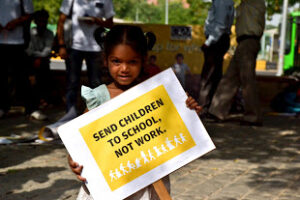Our goals are aligned with the SDGs: Suma Ravi, Regional Director (South), CRY
Related Articles
CSR News: Initiative to Provide 12 Lakh Meals to Children
ADP India, a global leader in human capital management, proudly announces a significant extension to its collaboration with the Akshaya Patra Foundation, with the...
The Guardian of Life: 80-Year-Old Sua Dai Maa Has Delivered Over 5000 Babies in Rural Ajmer – Without Ever Charging a Penny
In the narrow lanes of Kotri village in Ajmer, Rajasthan, lives an 80-year-old woman whose hands have gently ushered over 5000 babies into the...
Bombay HC Allows Abortion at 25 Weeks After Woman Cites Mental Trauma
A 31-year-old woman, while appearing in court, shared how a failed contraceptive led to her pregnancy and that she is no longer in a...


